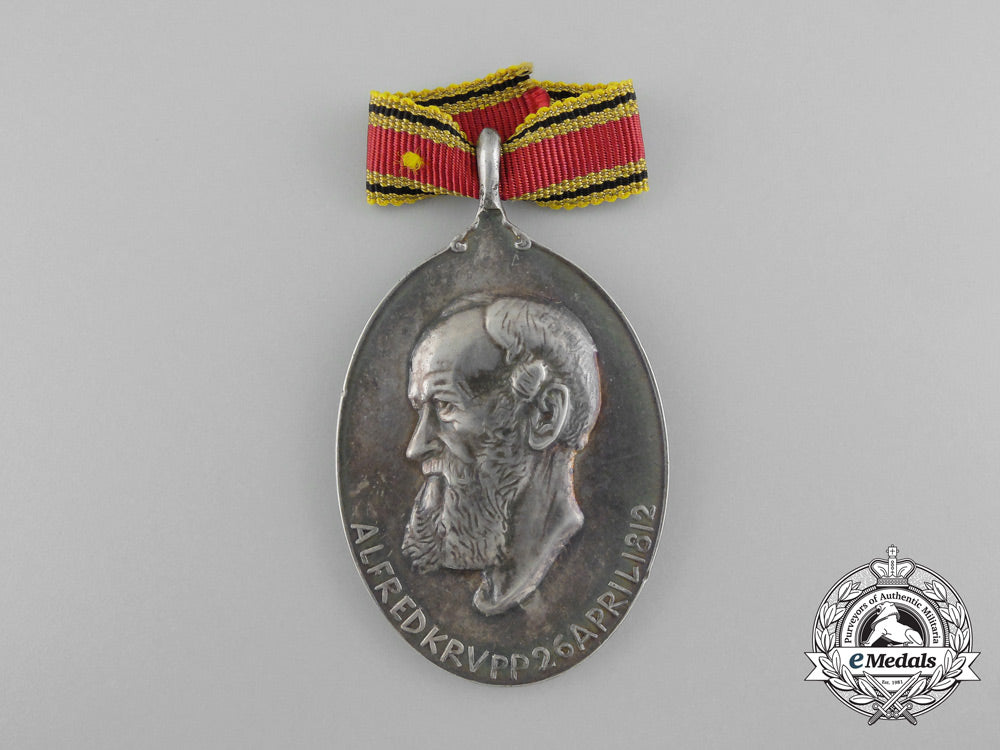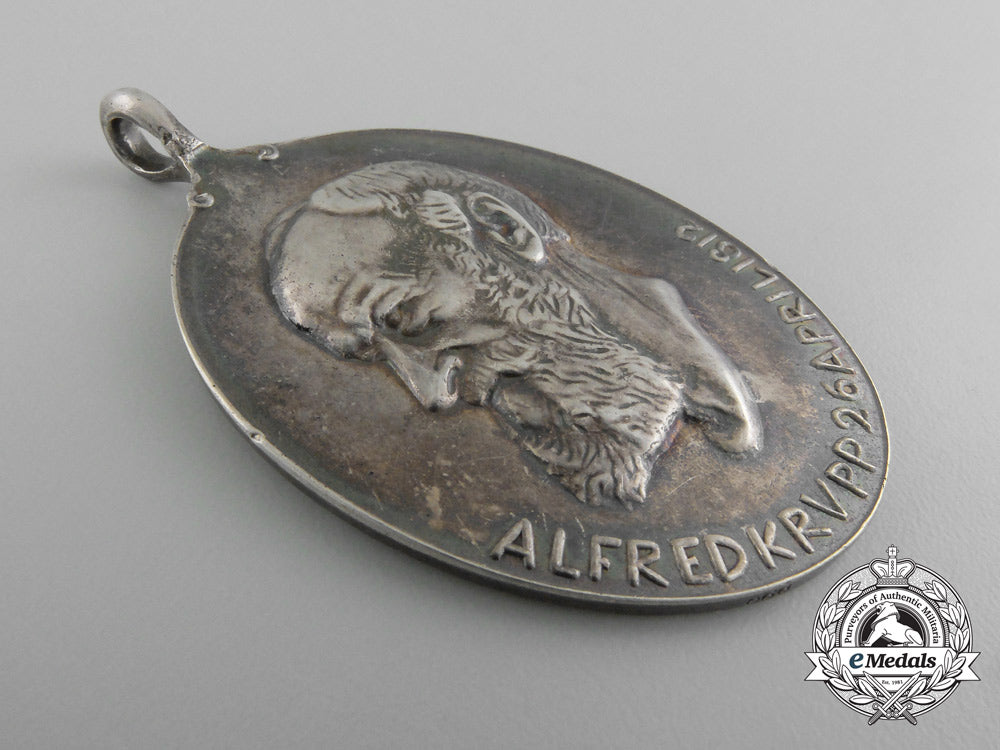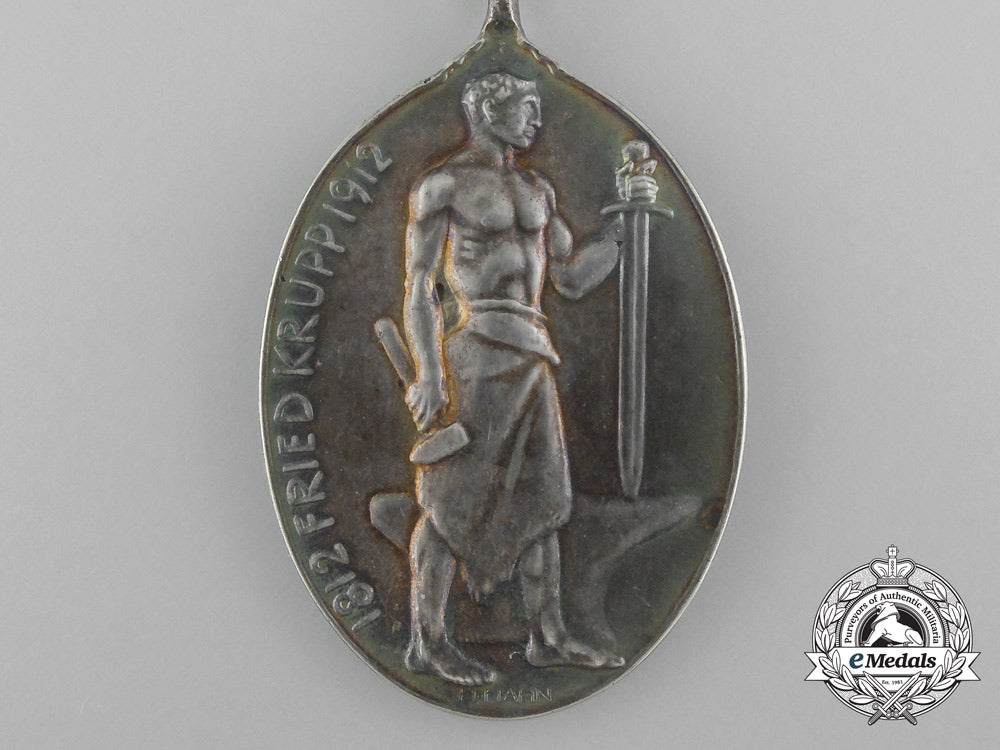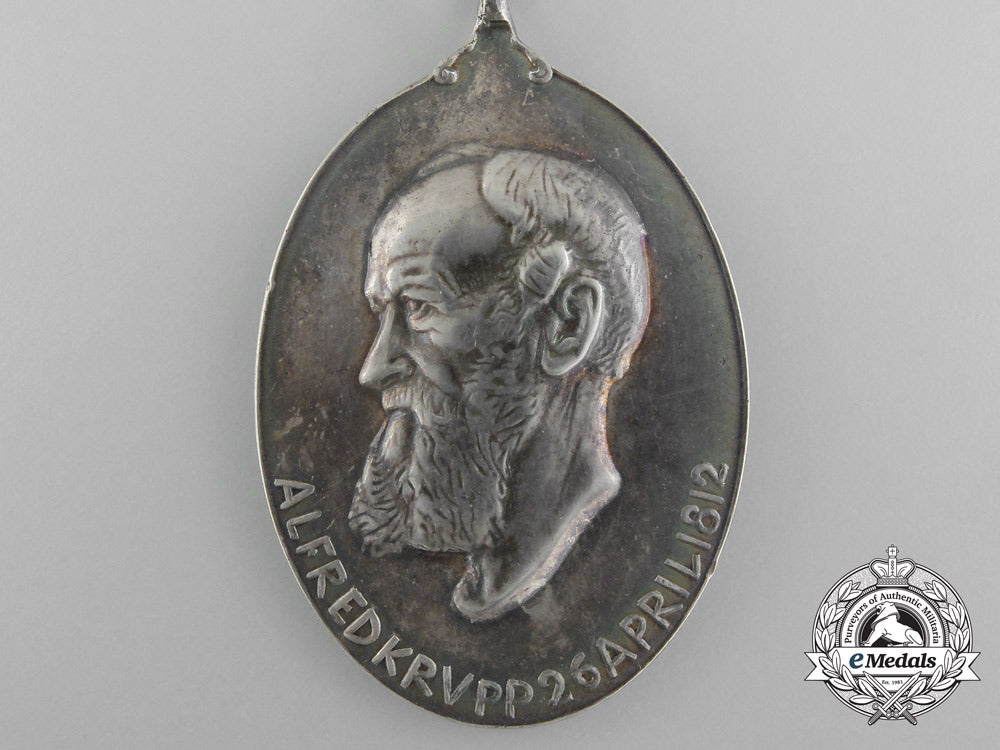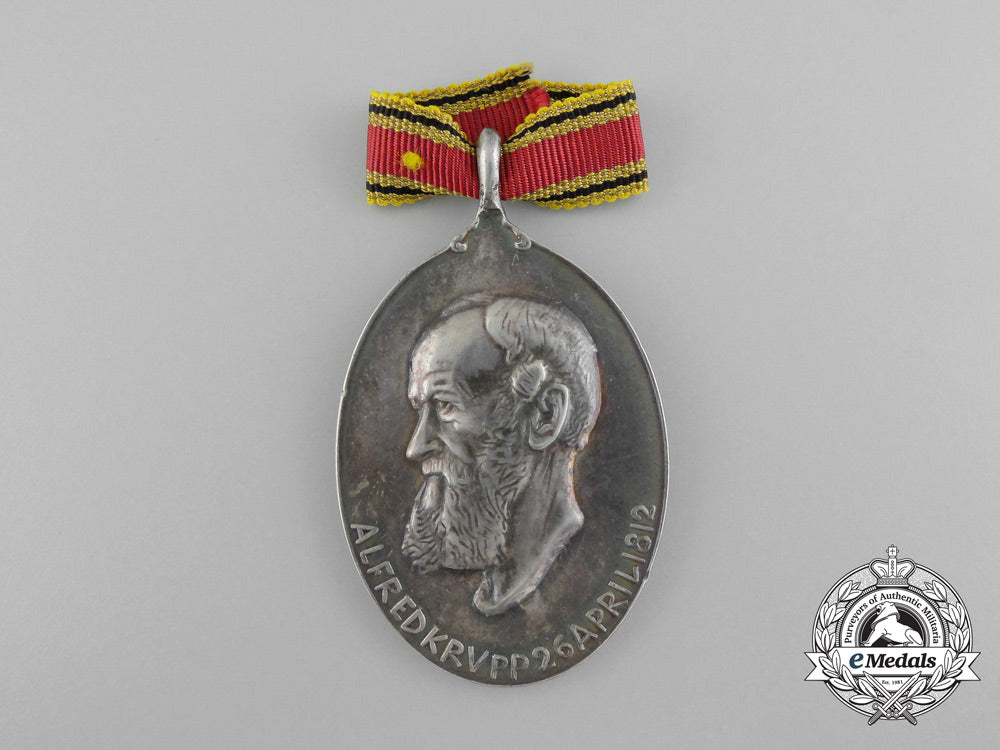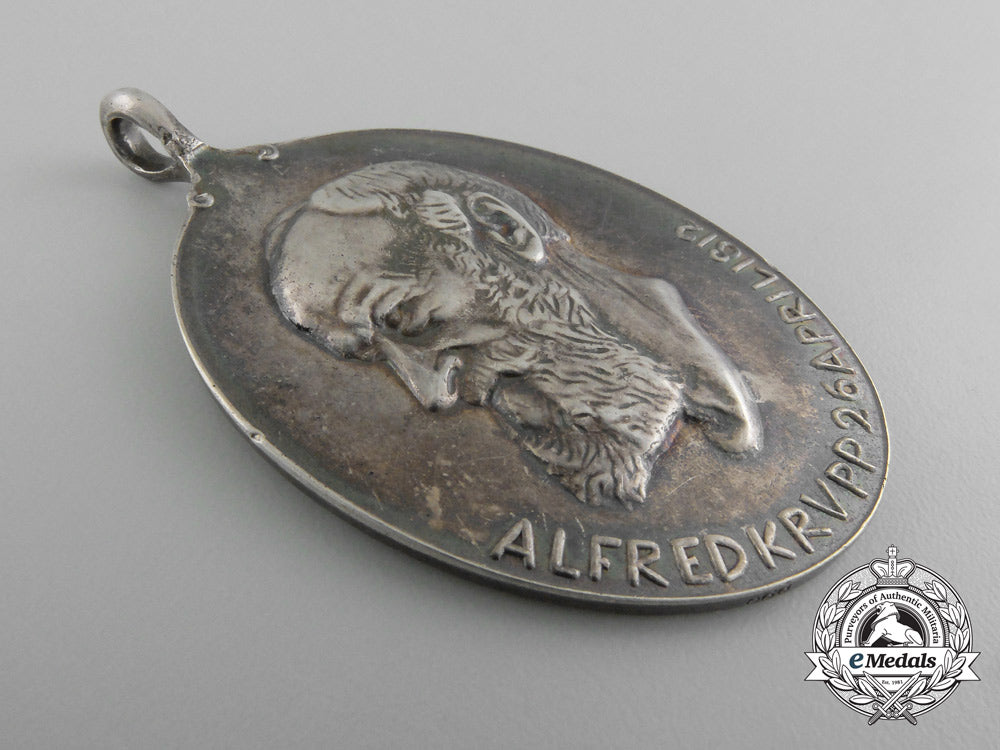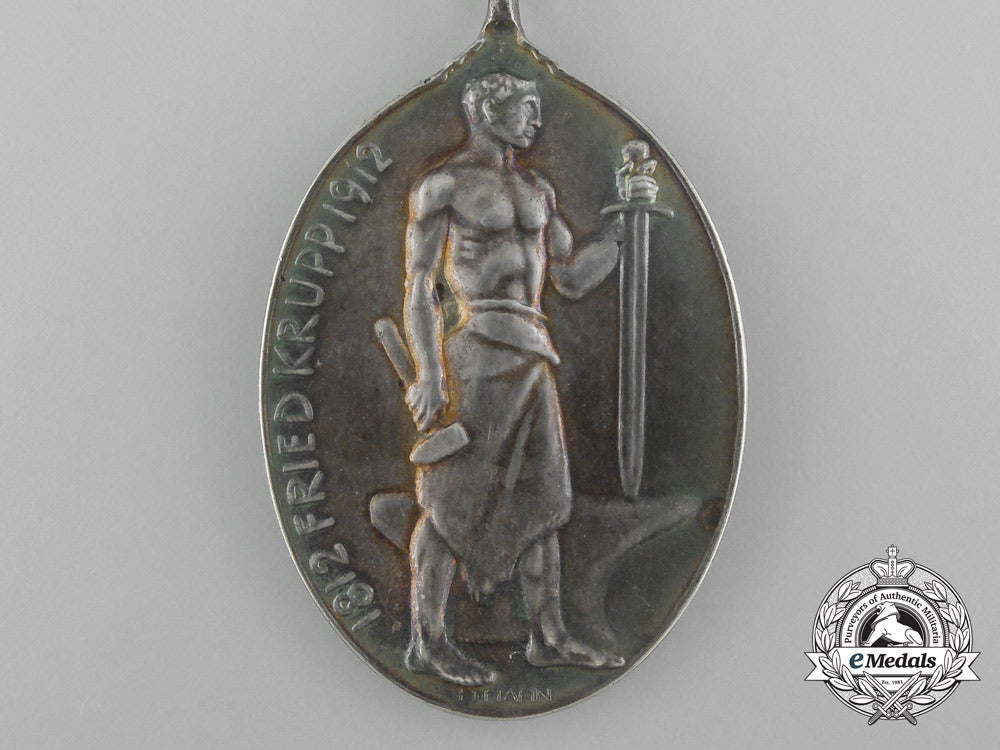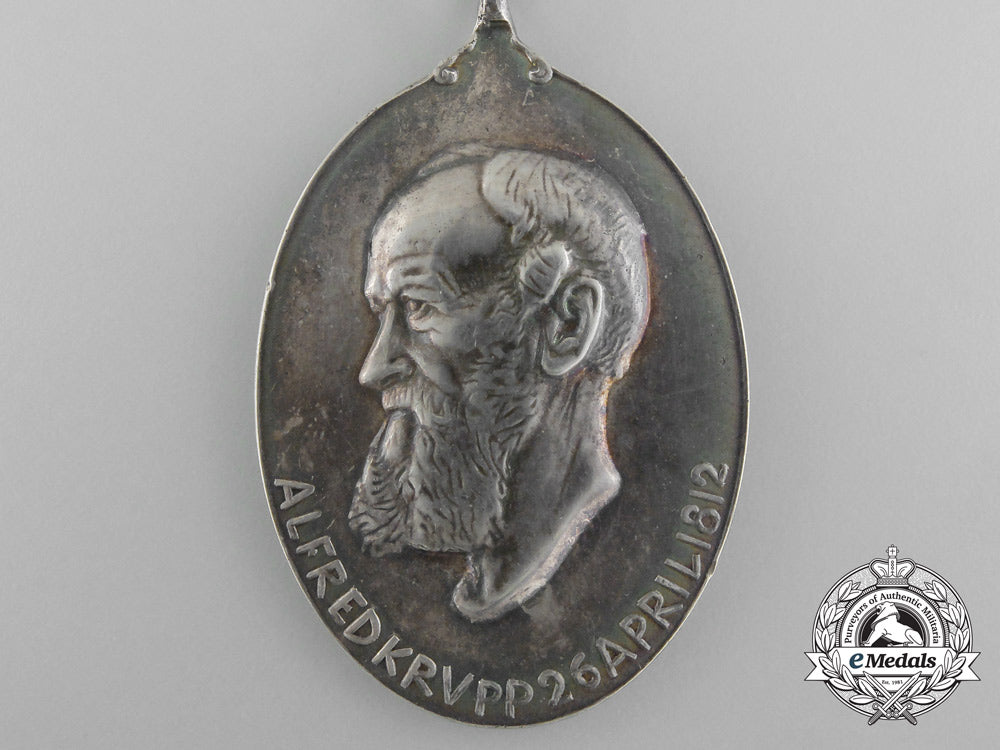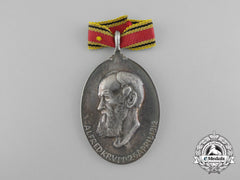
LOADING ...
In response to evolving domestic opinion, eMedals Inc has made the conscious decision to remove the presentation of German Third Reich historical artifacts from our online catalogue. For three decades, eMedals Inc has made an effort to preserve history in all its forms. As historians and researchers, we have managed sensitive articles and materials with the greatest of care and respect for their past and present social context. We acknowledge the growing sentiments put forth by the Canadian public and have taken proactive actions to address this opinion.
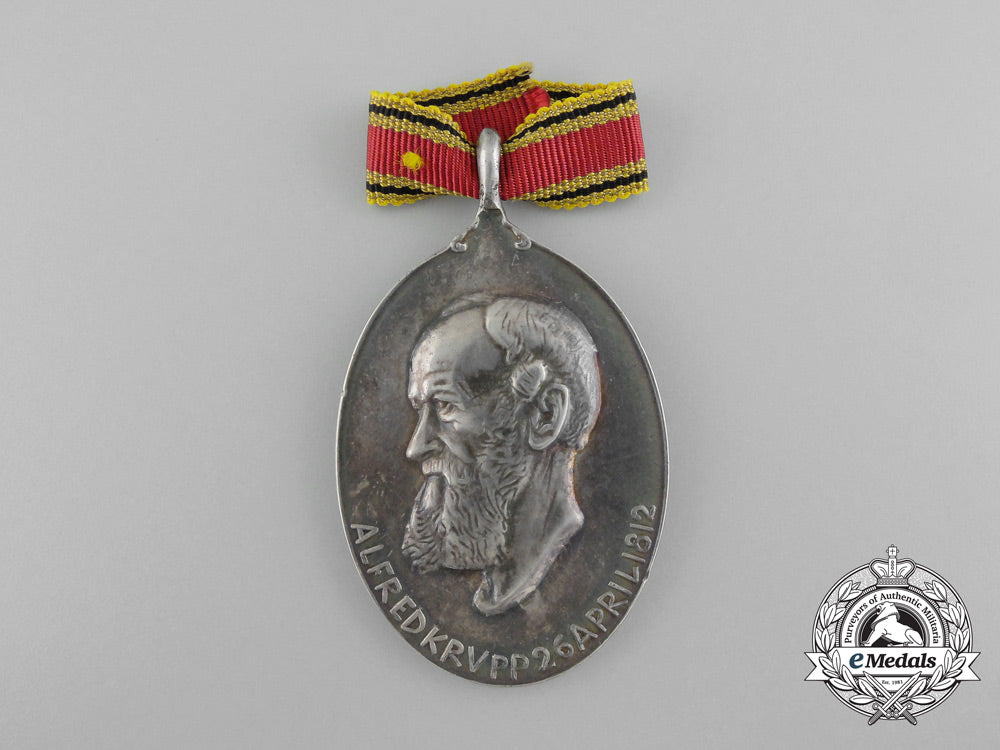
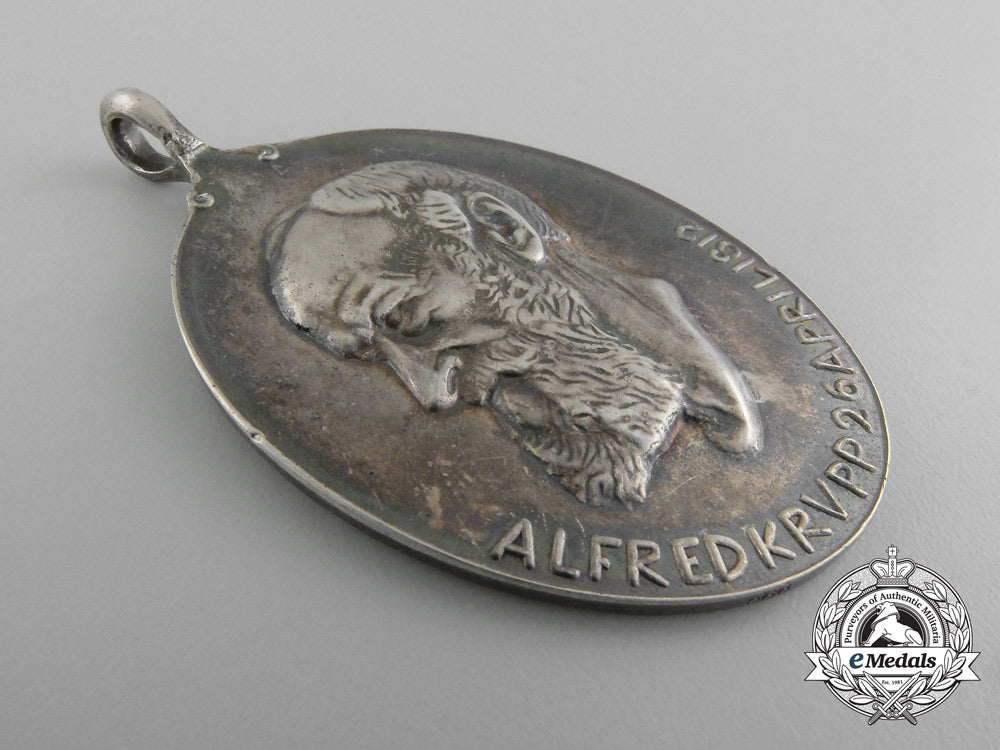
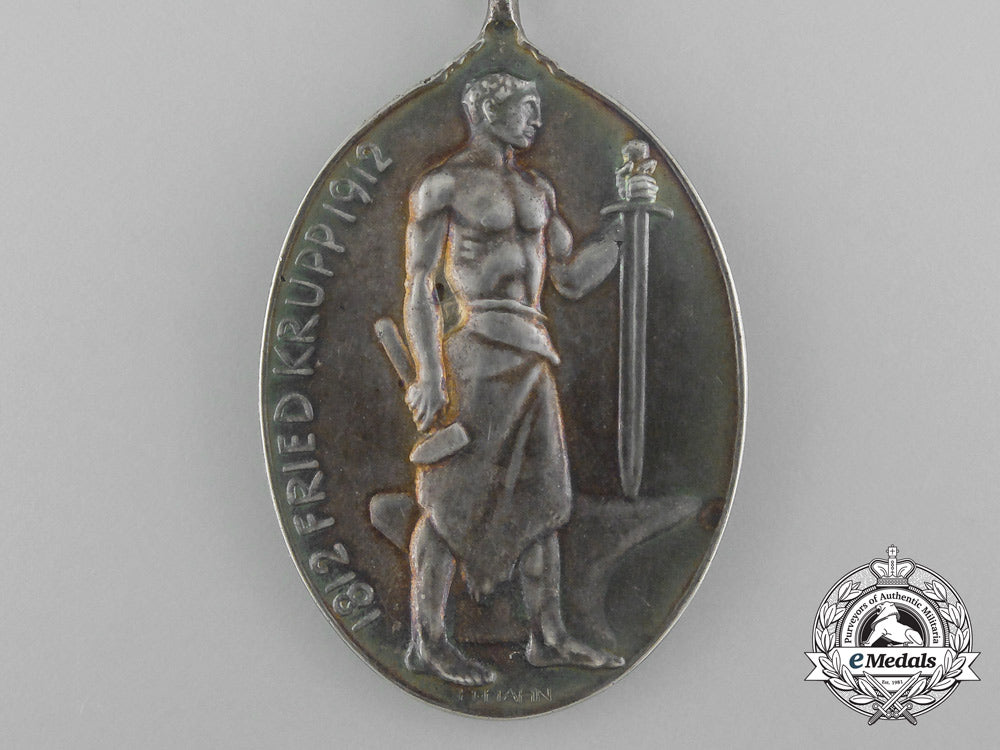
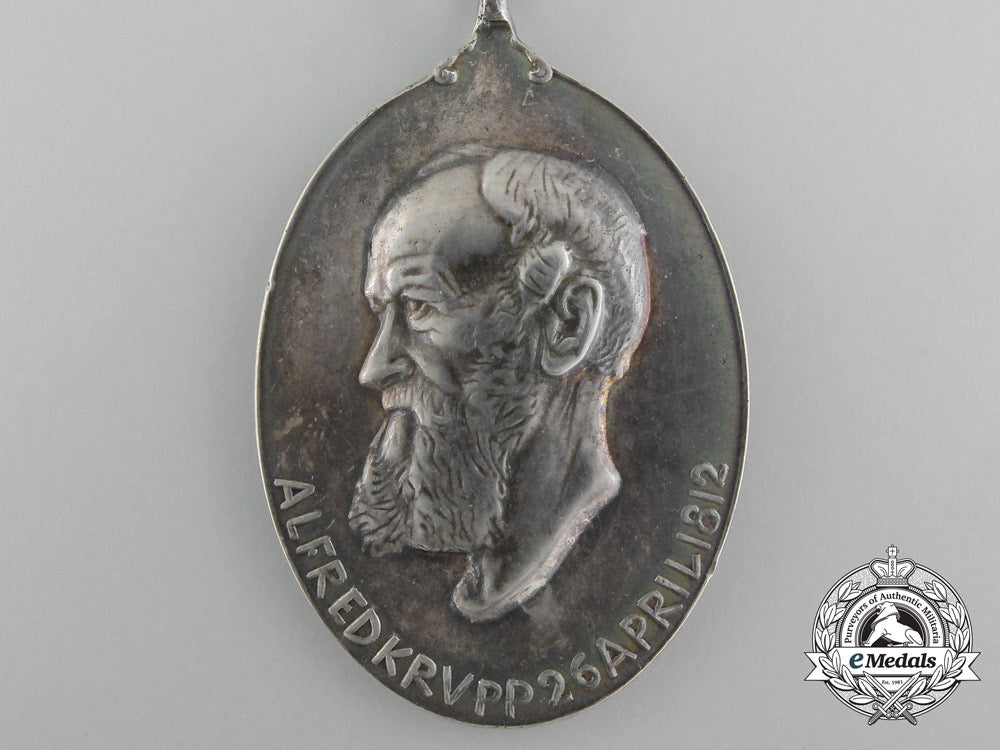
A 1812-1912 100Th Anniversary Of The Birth Of Alfred Krupp Medal
A 1812-1912 100Th Anniversary Of The Birth Of Alfred Krupp Medal
SKU: ITEM: G25019
Current Bid:
Your Max Bid:
Bid History:
Time Remaining:
Couldn't load pickup availability
Shipping Details
Shipping Details
eMedals offers rapid domestic and international shipping. Orders received prior to 12:00pm (EST) will be shipped on the same business day.* Orders placed on Canadian Federal holidays will be dispatched the subsequent business day. Courier tracking numbers are provided for all shipments. All items purchased from eMedals can be returned for a full monetary refund or merchandise credit, providing the criteria presented in our Terms & Conditions are met. *Please note that the addition of a COA may impact dispatch time.
Shipping Details
eMedals offers rapid domestic and international shipping. Orders received prior to 12:00pm (EST) will be shipped on the same business day.* Orders placed on Canadian Federal holidays will be dispatched the subsequent business day. Courier tracking numbers are provided for all shipments. All items purchased from eMedals can be returned for a full monetary refund or merchandise credit, providing the criteria presented in our Terms & Conditions are met. *Please note that the addition of a COA may impact dispatch time.
Description
Description
Silver, obverse illustrating the left-facing bust of industrialist Alfred Krupp, inscribed "ALFRED KRVPP 26 APRIL 1812" below, reverse illustrating a steelworker, cloaked from the waist down, a hammer in his right hand, a downward-pointing sword in his left hand, the tip of the sword resting upon an anvil, inscribed "1812 FRIED KRUPP 1912" at the left and engraver marked "H. HAYN", below the steelworker's right foot, 37.5 mm x 53.3 mm, integral ring suspension, extremely fine.
Footnote: Alfred Krupp (born Alfried Felix Alwyn Krupp), son of Friedrich Carl, was born in Essen on April 26, 1812. His father's death forced him to leave school at the age of fourteen and take on responsibility for the steel works. Prospects were daunting: his father had spent a considerable fortune in the attempt to cast steel in large ingots, and to keep the works going, the widow and family lived in extreme frugality. The young director laboured alongside the workmen by day and carried on his father's experiments at night, when not touring Europe trying to make sales. It was during a stay in England that young Alfried became enamored of the country and adopted the English spelling of his name. For years, the works made barely enough money to cover the workmen's wages. Then, in 1841, Alfred's brother Hermann invented the spoon-roller, which Alfred patented, bringing in enough money to enlarge the factory and cast steel blocks. In 1847, Krupp made his first cannon of cast steel. At the Great Exhibition (London) of 1851, he exhibited a 6-pounder made entirely from cast steel, and a solid flawless ingot of steel weighing 4,300 pounds (2,000 kg), more than twice as much as any previously cast. He surpassed this with a 100,000-pound (45,000 kg) ingot for the Paris Exposition in 1855. Krupp's exhibits caused a sensation in the engineering world, and the Essen works became famous. In 1851, another successful innovation, no-weld railway tires, began the company's primary revenue stream, from sales to railways in the United States. Alfred enlarged the factory and fulfilled his long-cherished scheme to construct a breech-loading cannon of cast steel. Alfred strongly believed in the superiority of breech-loaders, on account of improved accuracy and speed, but this view did not win general acceptance among military officers, who remained loyal to tried-and-true muzzle-loaded bronze cannon. Indeed, unable to sell his steel cannon, Krupp gave it to the King of Prussia, who used it as a decorative piece. The king's brother Wilhelm, however, realized the significance of the innovation. After he became regent in 1859, Prussia bought its first 312 steel cannon fromKrupp, which became the main arms manufacturer for the Prussian military. The French high command refused to purchase Krupp guns despite Napoleon III's support. The Franco-Prussian war was in part a contest of "Kruppstahl" versus bronze cannon. The success of German artillery spurred the first international arms race, against Schneider-Creusot in France and Armstrong in England. Krupp was able to sell, alternately, improved artillery and improved steel shielding to countries from Russia to Chile to Siam. In the Panic of 1873, Alfred continued to expand, including the purchase of Spanish mines and Dutch shipping, making Krupp the biggest company in Europe but nearly bankrupting it. He was bailed out with a thirty million Mark loan from a consortium of banks arranged by the Prussian State Bank. In 1878 and 1879,Krupp held competitions known as Völkerschiessen, which were firing demonstrations of cannon for international buyers. These were held in Meppen, at the largest proving ground in the world; privately owned by Krupp. He took on forty-six nations as customers. At the time of his death in 1887, he had 75,000 employees, including 20,200 in Essen. In his lifetime, Kruppmanufactured a total of 24,576 guns; 10,666 for the German government and 13,910 for export. Krupp established the Generalregulativ as the firm’s basic constitution. The company was a sole proprietorship, inherited by primogeniture, with strict control of workers. Kruppdemanded a loyalty oath, required workers to obtain written permission from their foremen when they needed to use the toilet and issued proclamations telling his workers not to concern themselves with national politics. In return, Krupp provided social services that were unusually liberal for the era, including "colonies" with parks, schools and recreation grounds, while the widows' and orphans' and other benefit schemes insured the men and their families in case of illness or death. Essen became a large company town and Krupp became a de facto state within a state, with "Kruppianer" as loyal to the company and the Krupp family as to the nation and the Hohenzollern family. Krupp’s paternalist strategy was adopted by Bismarck as government policy, as a preventive against Social Democratic tendencies, and later influenced the development and adoption of Führerprinzip by Adolf Hitler. The Krupp social services program began about 1861, when it was found that there were not sufficient houses in the town for firm employees, and the firm began building dwellings. By 1862 ten houses were ready for foremen, and in 1863 the first houses for workingmen were built in Alt Westend. Neu Westend was built in 1871 and 1872. By 1905, 400 houses were provided, many being given rent free to widows of former workers. A cooperative society was founded in 1868 which became the Consum-Anstalt. Profits were divided according to amounts purchased. A boarding house for single men, the Ménage, was started in 1865 with 200 boarders and by 1905 accommodated 1000. Bath houses were provided and employees received free medical services. Accident, life, and sickness insurance societies were formed, and the firm contributed to their support. Technical and manual training schools were provided. Krupp was also held in high esteem by the Kaiser, who dismissed Julius von Verdy du Vernois and his successor Hans von Kaltenborn for rejecting Krupp's design of the C-96 field gun, quipping, “I’ve canned three War Ministers because of Krupp, and still they don’t catch on!” Krupp proclaimed he wished to have "a man come and start a counter-revolution" against Jews, socialists and liberals. In some of his odder moods, he considered taking the role himself. According to historian William Manchester, his great grandson Alfried Krupp would interpret these outbursts as a prophecy fulfilled by the coming of Hitler. Krupp's marriage was not a happy one. His wife Bertha (not to be confused with their granddaughter), was unwilling to remain in polluted Essen in Villa Hügel, the ungainly but fireproof castle which Krupp designed. She spent most of their married years in resorts and spas, with their only child, a son. He died in 1887, his only son, Friedrich Alfred, carrying on his work.
Description
Silver, obverse illustrating the left-facing bust of industrialist Alfred Krupp, inscribed "ALFRED KRVPP 26 APRIL 1812" below, reverse illustrating a steelworker, cloaked from the waist down, a hammer in his right hand, a downward-pointing sword in his left hand, the tip of the sword resting upon an anvil, inscribed "1812 FRIED KRUPP 1912" at the left and engraver marked "H. HAYN", below the steelworker's right foot, 37.5 mm x 53.3 mm, integral ring suspension, extremely fine.
Footnote: Alfred Krupp (born Alfried Felix Alwyn Krupp), son of Friedrich Carl, was born in Essen on April 26, 1812. His father's death forced him to leave school at the age of fourteen and take on responsibility for the steel works. Prospects were daunting: his father had spent a considerable fortune in the attempt to cast steel in large ingots, and to keep the works going, the widow and family lived in extreme frugality. The young director laboured alongside the workmen by day and carried on his father's experiments at night, when not touring Europe trying to make sales. It was during a stay in England that young Alfried became enamored of the country and adopted the English spelling of his name. For years, the works made barely enough money to cover the workmen's wages. Then, in 1841, Alfred's brother Hermann invented the spoon-roller, which Alfred patented, bringing in enough money to enlarge the factory and cast steel blocks. In 1847, Krupp made his first cannon of cast steel. At the Great Exhibition (London) of 1851, he exhibited a 6-pounder made entirely from cast steel, and a solid flawless ingot of steel weighing 4,300 pounds (2,000 kg), more than twice as much as any previously cast. He surpassed this with a 100,000-pound (45,000 kg) ingot for the Paris Exposition in 1855. Krupp's exhibits caused a sensation in the engineering world, and the Essen works became famous. In 1851, another successful innovation, no-weld railway tires, began the company's primary revenue stream, from sales to railways in the United States. Alfred enlarged the factory and fulfilled his long-cherished scheme to construct a breech-loading cannon of cast steel. Alfred strongly believed in the superiority of breech-loaders, on account of improved accuracy and speed, but this view did not win general acceptance among military officers, who remained loyal to tried-and-true muzzle-loaded bronze cannon. Indeed, unable to sell his steel cannon, Krupp gave it to the King of Prussia, who used it as a decorative piece. The king's brother Wilhelm, however, realized the significance of the innovation. After he became regent in 1859, Prussia bought its first 312 steel cannon fromKrupp, which became the main arms manufacturer for the Prussian military. The French high command refused to purchase Krupp guns despite Napoleon III's support. The Franco-Prussian war was in part a contest of "Kruppstahl" versus bronze cannon. The success of German artillery spurred the first international arms race, against Schneider-Creusot in France and Armstrong in England. Krupp was able to sell, alternately, improved artillery and improved steel shielding to countries from Russia to Chile to Siam. In the Panic of 1873, Alfred continued to expand, including the purchase of Spanish mines and Dutch shipping, making Krupp the biggest company in Europe but nearly bankrupting it. He was bailed out with a thirty million Mark loan from a consortium of banks arranged by the Prussian State Bank. In 1878 and 1879,Krupp held competitions known as Völkerschiessen, which were firing demonstrations of cannon for international buyers. These were held in Meppen, at the largest proving ground in the world; privately owned by Krupp. He took on forty-six nations as customers. At the time of his death in 1887, he had 75,000 employees, including 20,200 in Essen. In his lifetime, Kruppmanufactured a total of 24,576 guns; 10,666 for the German government and 13,910 for export. Krupp established the Generalregulativ as the firm’s basic constitution. The company was a sole proprietorship, inherited by primogeniture, with strict control of workers. Kruppdemanded a loyalty oath, required workers to obtain written permission from their foremen when they needed to use the toilet and issued proclamations telling his workers not to concern themselves with national politics. In return, Krupp provided social services that were unusually liberal for the era, including "colonies" with parks, schools and recreation grounds, while the widows' and orphans' and other benefit schemes insured the men and their families in case of illness or death. Essen became a large company town and Krupp became a de facto state within a state, with "Kruppianer" as loyal to the company and the Krupp family as to the nation and the Hohenzollern family. Krupp’s paternalist strategy was adopted by Bismarck as government policy, as a preventive against Social Democratic tendencies, and later influenced the development and adoption of Führerprinzip by Adolf Hitler. The Krupp social services program began about 1861, when it was found that there were not sufficient houses in the town for firm employees, and the firm began building dwellings. By 1862 ten houses were ready for foremen, and in 1863 the first houses for workingmen were built in Alt Westend. Neu Westend was built in 1871 and 1872. By 1905, 400 houses were provided, many being given rent free to widows of former workers. A cooperative society was founded in 1868 which became the Consum-Anstalt. Profits were divided according to amounts purchased. A boarding house for single men, the Ménage, was started in 1865 with 200 boarders and by 1905 accommodated 1000. Bath houses were provided and employees received free medical services. Accident, life, and sickness insurance societies were formed, and the firm contributed to their support. Technical and manual training schools were provided. Krupp was also held in high esteem by the Kaiser, who dismissed Julius von Verdy du Vernois and his successor Hans von Kaltenborn for rejecting Krupp's design of the C-96 field gun, quipping, “I’ve canned three War Ministers because of Krupp, and still they don’t catch on!” Krupp proclaimed he wished to have "a man come and start a counter-revolution" against Jews, socialists and liberals. In some of his odder moods, he considered taking the role himself. According to historian William Manchester, his great grandson Alfried Krupp would interpret these outbursts as a prophecy fulfilled by the coming of Hitler. Krupp's marriage was not a happy one. His wife Bertha (not to be confused with their granddaughter), was unwilling to remain in polluted Essen in Villa Hügel, the ungainly but fireproof castle which Krupp designed. She spent most of their married years in resorts and spas, with their only child, a son. He died in 1887, his only son, Friedrich Alfred, carrying on his work.
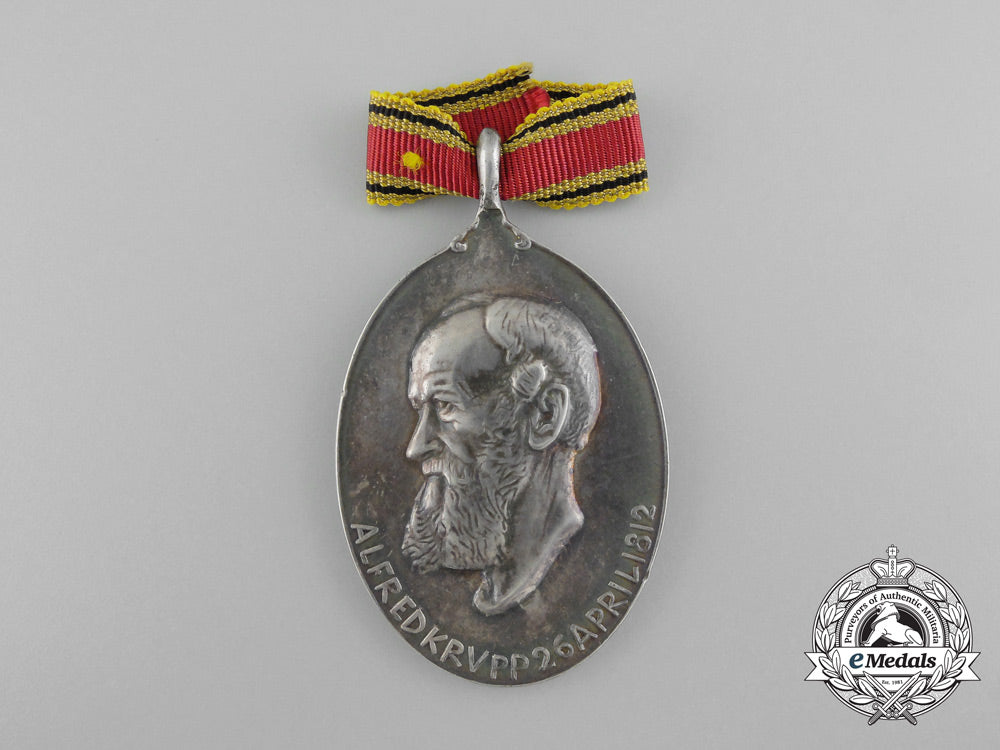
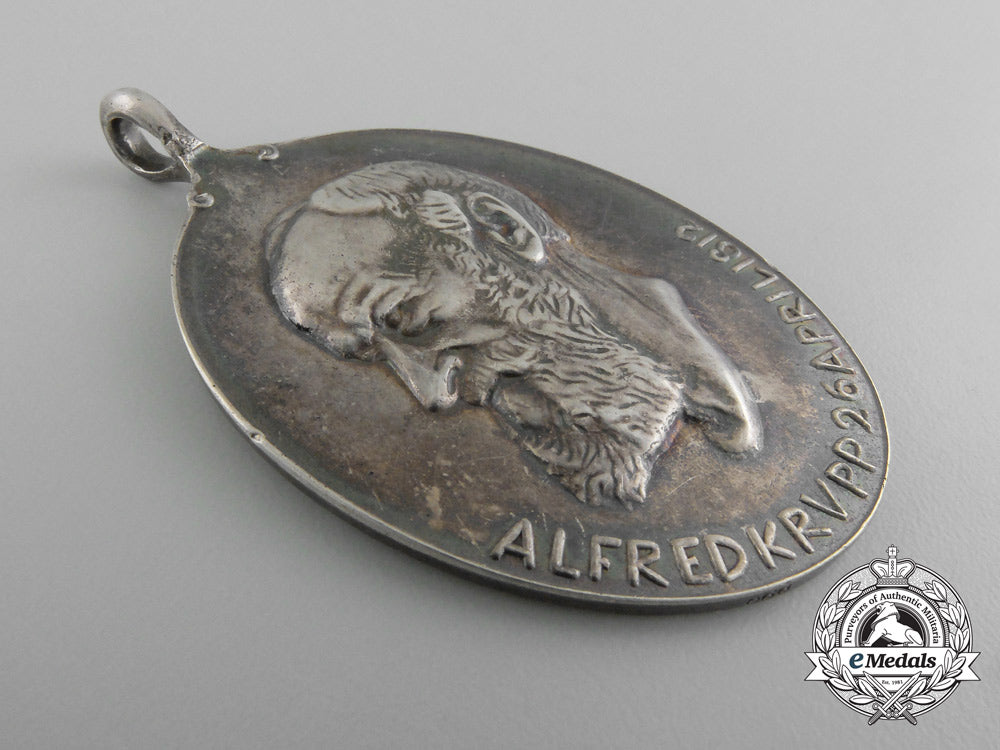
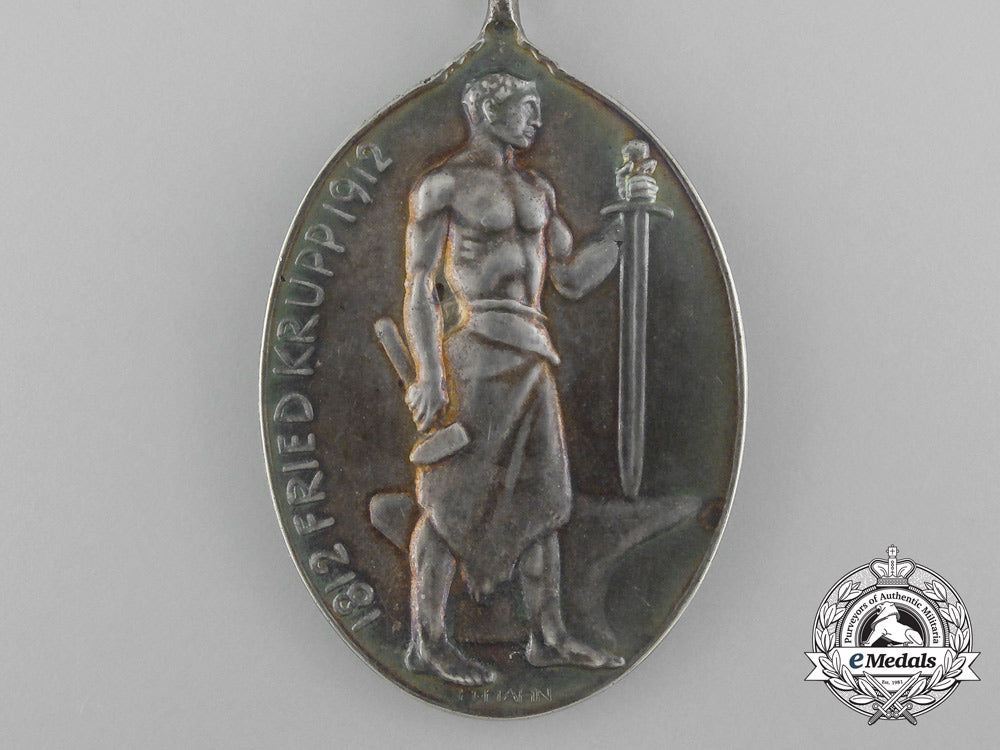
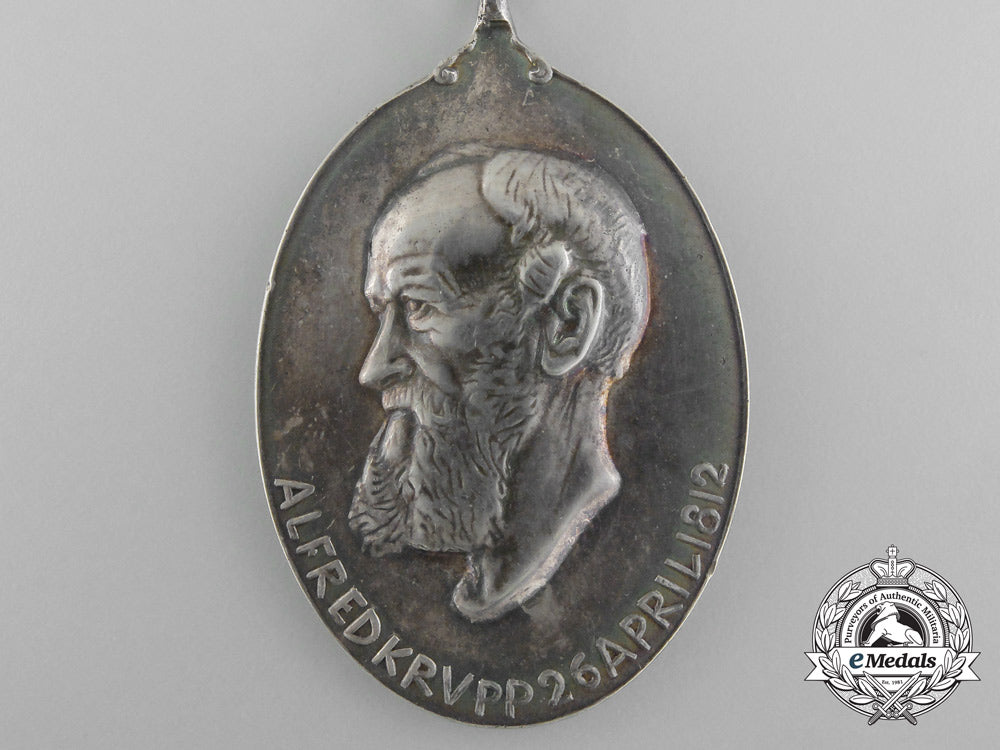
You May Also Like
Germany, HJ. A 1938 National Trade Competition Victor’s Badge, Gold Grade in Case, By Gustav Brehmer
G60096
Italy, Republic. An Order of Merit of the Italian Republic, Grand Cross Set by Johnson, 1970
EU23677
Spain, Franco Period. An Order of Civil Merit, Grand Cross Set
EU23731
Russia, Imperial. An Order of St. Anne, II Class in Gold
EU23720
Austria, Imperial. An Order of the Iron Crown, III Class in Gold, by Rothe, c.1900
EU23723
-
Germany, HJ. A 1938 National Trade Competition Victor’s Badge, Gold Grade in Case, By Gustav Brehmer
G60096
Add to CartRegular price $3,950 USDRegular price $0 USD Sale price $3,950 USDUnit price / per -
Italy, Republic. An Order of Merit of the Italian Republic, Grand Cross Set by Johnson, 1970
EU23677
Add to CartRegular price $950 USDRegular price $0 USD Sale price $950 USDUnit price / per -
Spain, Franco Period. An Order of Civil Merit, Grand Cross Set
EU23731
Add to CartRegular price $600 USDRegular price $0 USD Sale price $600 USDUnit price / per -
Russia, Imperial. An Order of St. Anne, II Class in Gold
EU23720
Add to CartRegular price $2,950 USDRegular price $0 USD Sale price $2,950 USDUnit price / per -
Austria, Imperial. An Order of the Iron Crown, III Class in Gold, by Rothe, c.1900
EU23723
Add to CartRegular price $3,950 USDRegular price $0 USD Sale price $3,950 USDUnit price / per
Do you have a similar item you are interested in selling?
Please complete the form and our client care representatives will contact you.
Sell Item